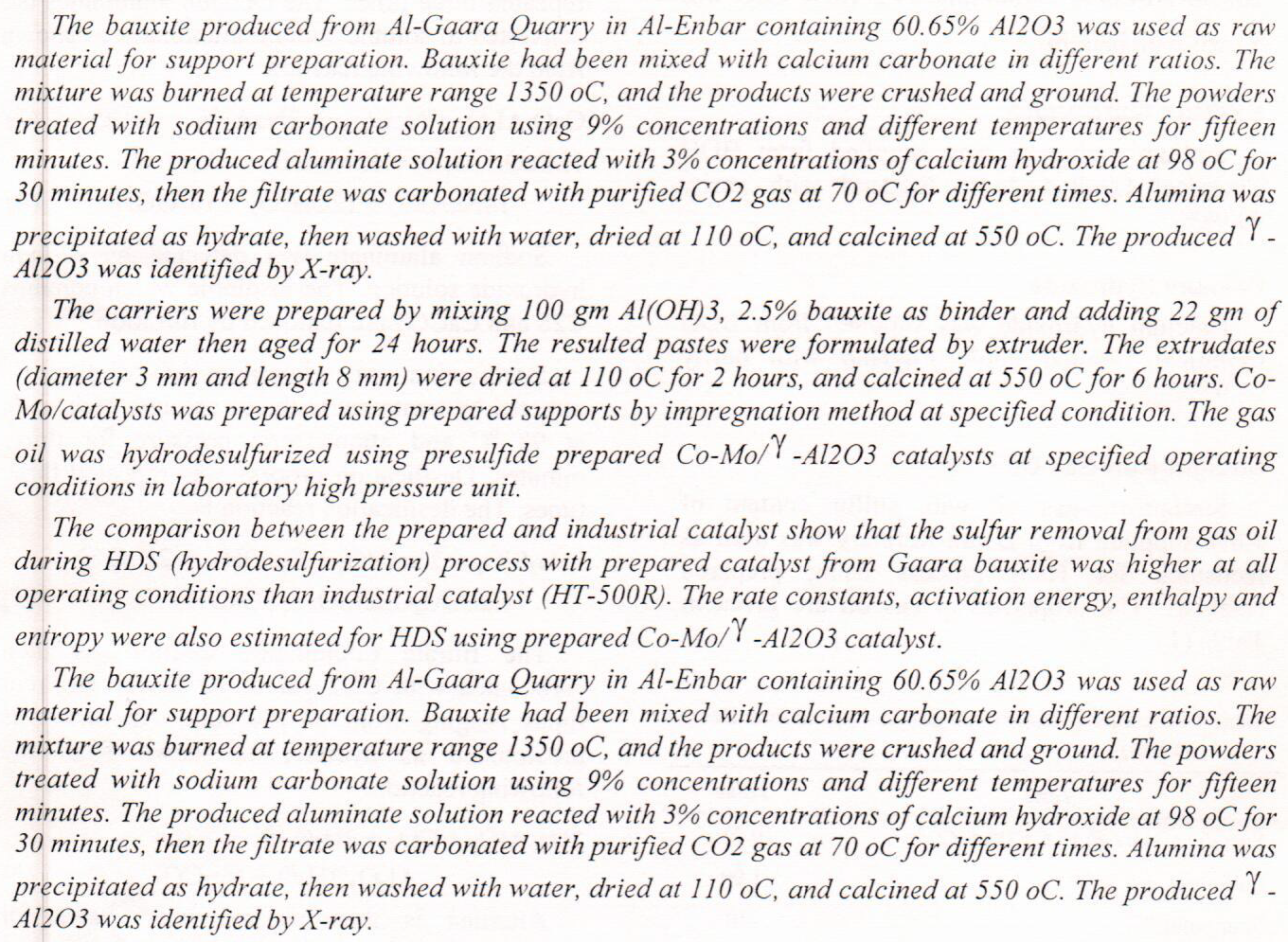
From 211 urine samples, Gram negative bacteria were isolated from only 61 urine samples with isolation percentage 28.9%. Escherichia coli were isolated percentage 70.49% while Klebsiella pneumoniae and Psendomonas aeruginosa were 8.19% and 6.55%, respectively.Proteus spp. Were isolated from 9 (14.75%), P. mirablis and P. vulgaris were isolates percentage 11.47% and 3.27%, respectively. Uroepithelial Cell Adhesin (UCA) fimbriae expression by P.mirabilis isolates was detected by the high capacity to adhesion to human uroepithetial cells, the isolate p.mirabilis U7 was adhesion to human uroepithelial cells mean no.30.2 bacteria/cell when grown on luria broth at 37C for 24h, but then grown it’s on luria agar at 37C for 24h the adhesion
... Show MoreThe present study examines the extraction of lead (Pb), cadmium (Cd) and nickel (Ni) from a contaminated soil by washing process. Ethylenediaminetetraacetic acid disodium salt (Na2EDTA) and hydrochloric acid (HCl) solution were used as extractants. Soil washing is one of the most suitable in-situ/ ex-situ remediation method in removing heavy metals. Soil was artificially contaminated with 500 mg/kg (Pb , Cd and Ni ). A set of batch experiments were carried out at different conditions of extractant concentration , contact time, pH and agitation speed. The results showed that the maximum removal efficiencies of (Cd, Pb and Ni ) were (97, 88 and 24 )&nbs
... Show MoreThe extraction of iron from aqueous chloride media in presence of aluminum was studied at different kinds of extractants(cyclohexanone, tributyl phosphate, diethyl ketone), different values of normality (pH of the feed solution), agitation time, agitation speed, operating temperature, phase ratio (O/A), iron concentration in the feed, and extractant concentration]. The stripping of iron from organic solutions was also studied at different values of normality (pH of the strip solution) and phase ratio (A/O). Atomic absorption spectrophotometer was used to measure the concentration of iron and aluminum in the aqueous phase throughout the experiments.The best values of extraction coefficient and stripping coefficient are obtained under the
... Show MoreAn investigation was conducted effect of addition co- solvent on solvent extraction process for two types of a lubricating oil fraction (spindle) and (SAE-30) obtained from vacuum distillation unit of lube oil plant of Daura Refinery. In this study two types of co-solvents ( formamide and N-methyl, 2, pyrrolidone) were blended with furfural to extract aromatic hydrocarbons which are the undesirable materials in raw lubricating oil, in order to improve the viscosity index, viscosity and yield of produced lubricating oil. The studied operating condition are extraction temperature range from 70 to 110 °C for formamide and 80 to 120 °C for N-methyl, 2, pyrrolidone, solvent to oil ratio range from 1:1 to 2:1 (wt./wt.) for furfural with form
... Show MoreRoom temperature ionic liquids show potential as an alternative to conventional organic membrane solvents mainly due to their properties of low vapour pressure, low volatility and they are often stable. In the present work, the technical feasibilities of room temperature ionic liquids as bulk liquid membranes for phenol removal were investigated experimentally. In this research several hydrophobic ionic liquids were synthesized at laboratory. These ionic liquids include (1-butyl-3-methylimidazolium bis (trifluoromethylsulfonyl) imide[Bmim][NTf2], 1-Hexyl-3-methylimidazolium bis (trifluoromethylsulfonyl) imide[Hmim][NTf2], 1-octyl-3-methylimidazolium bis (trifluoromethylsulfonyl)imide[Omim][NTf2],1‐butyl
... Show MoreThis work was conducted to study the extraction of eucalyptus oil from natural plants (Eucalyptus camadulensis leaves) by organic solvents. the effects of the main operating parameters were studied; type of solvent (n-hexane and ethanol), time to reach equilibrium, the temperature (45°C to 65°C) for n-hexane and (45°C to 75°C) for ethanol, solvent to solid ratio (5:1 to 8:1 (v/w)), agitation speed (0 to 900 rpm) and the particle size (0.5 to 2.5 cm) of fresh leaves to find the best processing conditions for the achieving maximum oil yield. The concentration of eucalyptus oil in solvent was measured by using UV-spectrophotometer. The results (for n-hexane) showed that the agitation speed of 900 rpm, temperature 65°C with solvent to soli
... Show More (4)
(4)
The research deals with Environmental Management and how to develop its programs with the use of Knowledge Management, the environmental programs that integrate with processes can add strategic value to business through improving rates of resource utilization , efficiencies , reduce waste, use risk management, cut costs, avoid fines and reduce insurance. All these activities and processes can improve it through knowledge management, the optimal usage for all organizations information , employ it in high value and share it among all organizations members who involves in modify its strategy . Choosing suitable environmental management information system, develop it and modify it with organization processes, can greatly serve the en
... Show MoreActive Magnetic Bearings (AMBs) are progressively being implemented in a wide variety of applications. Their exclusive appealing features make them suitable for solving traditional rotor-bearing problems using novel design approaches for rotating machinery. In this paper, a linearized uncertain model of AMBs is utilized to develop a nonlinear sliding mode controller based on Lyapunov function for the electromechanical system. The controller requires measurements of the rotor displacements and their derivatives. Since the control law is discontinuous, the proposed controller can achieve a finite time regulation but with the drawback of the chattering problem. To reduce the effect of this problem, the gain of the uni
... Show More
